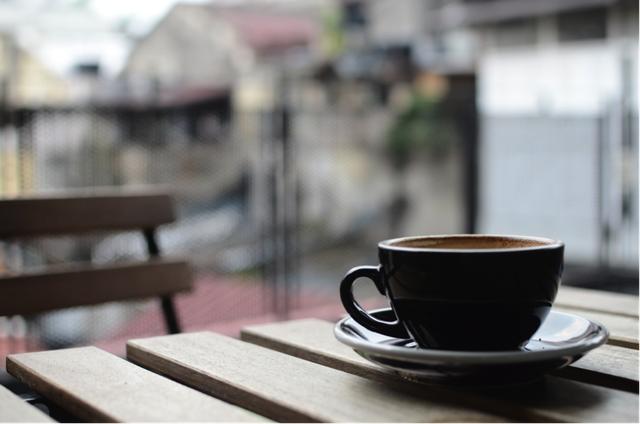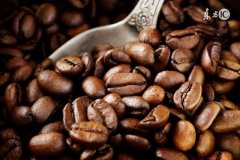The history, culture, stories and allusions of the holy boutique beans of the Edini Manor in West Java, Indonesia.

Professional barista communication, please pay attention to coffee workshop (Weixin Official Accounts cafe_style)
Indonesia West Java Aimani Manor Saint Boutique Single Product Bean History Culture, Story Allusion
Although Indonesia produces so much good coffee, it is puzzling that its residents prefer Turkish coffee to its famous European coffee.
[Origin]: Mount Tikukur, West Java?
Altitude: 1400-1600m.
[Breed]: Arabica?
The Arinanis?
[Flowering Period]: March-May, September-November?
[Treatment Method]: Honey Precess Sunlight Treatment?
[Cup Test]: 92 points?
[Flavor]: Mango, red wine, peach juice, intense fruity, with plum and jackfruit flavor, clean and sweet back to sweet.
Indonesia's Aimani Manor sun-baked beans, its flavor is not a bit like Indonesia beans, this bean has its own unique strong fruity, mango, red wine, peach juice, as well as plum and jackfruit flavor, clean and sweet back, cup test score of 92 points, let you can not believe that this is a coffee bean from Indonesia. This bean is called Aromanis in Indonesian, meaning sweet mango.
Indonesia Indonesia
Population: 23,742,400
In Indonesia, coffee beans slowly spread from Java to neighboring islands, reaching Sulawesi first in 1750, before extending to northern Indonesia. After planting began around Lake Toba in 1888, it eventually spread to Lake Tawar in the Gayo region in 1924.
SUMATRA
Sumatra has three main cultivation areas: the northern part of Aceh, the area slightly south around Lake Toba, and the recently emerged islands near Mangkuraja. It may also be traced to smaller areas of Takengon, Bener Mariah in Aceh, Lintong, Sidikalang, Dolok Sanggul and Seribu Dolok around Lake Doba. Coffee beans sold in the area were commonly known as "Sumatra Mantenin," but there is no actual place name for Mantenin, which comes from the ethnic name of the local islanders. Usually there are grades of mantenin, classified as Grade1 or Grade2. The grading method is undoubtedly based on cup testing quality rather than the generally believed raw beans themselves. But I'm still skeptical about recommending Grade1, because it seems to be flooding. It's odd to divide the varieties into batches, so most Sumatra beans are a mix of unknown varieties. Sumatra coffee beans are exported through Medan port, but they stay at the port for too long before export, and the hot and humid climate factors will not be conducive to the quality of coffee beans.
Altitude: Aceh 1100-1300m, Doba Lake 1100-1600m, Mangkuraja1100-1300m
Harvest: September-December
Varieties: Typica (including Bergandal, Sidikalang, Djember), Timtim, Ateng, Onan Gajang
JAVA
In Indonesia, this area inherited Dutch colonial customs and customs, so there are more large coffee plantations. The four main coffee fields, covering 4000 hectares, were formerly government estates. Coffee beans from this region enjoyed a reputation for excellence at the time, although I believe that a large number of formula beans have replaced "Mocha-Java" coffee beans not long ago. Java coffee beans used to be high for a long time, but in the 20th century there has been a significant decline in prices. The planting area covers the vicinity of Ijan volcano in eastern Java and western Java.
Altitude: 900-1800m
Harvest: September-September
Varieties: Typicas, Ateng, USDA
SULAWESI
Even though seven plantations supply about 5 per cent of Sulawesi's production, local production is dominated by smallholder supply. Most Arabica beans are grown high around Tana Toraja, Kalosi in the south is a brand, and two lesser-known areas are west of Mamasa and south of Kalosi, Gowa. There are a few particularly interesting coffee beans that have been washed, which are worth pondering and are highly recommended to try when you have the opportunity. Semi-washing treatment is a common method in Sulawesi, and local production is also quite a lot of Roast beans.
Tana Toraja 1100-1800m, Mamasa 1300-1700m, Gowa average 850m
Harvest: May-November
Breed: S795, Typicas, Ateng
FLORES
Flores is a small island located about 320 km (200 mi) east of Bali, one of the Indonesian archipelagos. As a latecomer to the coffee industry, it has developed a good reputation for growing coffee. In the past, Flores produced coffee that was mostly sold domestically or mixed with other coffees for export, and rarely sold directly under the name "Flores Coffee." There are active and dormant volcanoes on the island, with a mixture of Bajawa volcanoes having a great positive impact on the main cultivation areas. In coffee processing, the semi-wash process is the most common treatment in the region, and some coffee beans are still produced by the full wash process.
Tana Toraja 1200-1800m, Mamasa 1300-1700m, Gowa average 850m
Harvest: May-September
Varieties: Typicas, Ateng, Robusta
BALI
Coffee came to Bali relatively late and was originally grown on the Kintamani plateau. Coffee production was greatly affected by the Gunung Agung eruption in 1963, which killed more than 20,000 people and caused extensive damage to eastern Bali. In the late 1970s and early 1980s, the government distributed Arabica seedlings to boost coffee production, but this was considered to be of limited effect because today about 80 percent of the island's production consists of robusta beans. Although tourism provides the largest revenue, agriculture employs the largest number of people on the island, and Japan used to be the largest buyer.
Altitude: 1,250- 1,700 m
Harvest: May-October
Varieties: Typicas, Typica derivatives, Robusta
Java produces fine aromatic coffee with relatively low acidity, fine taste and good balance. Java coffee has a superior aroma and acidity to Sumatra and Sulawesi coffees. The best plantations in Java are Blawan, Jambit, Kayumas and Pankur. Java mocha coffee is a blend of Java coffee and Yemeni mocha coffee.
Sumatra, Indonesia's second largest island, is the center of Indonesia's oil industry. Rubber and timber on the island are also famous export commodities. Sumatra coffee, however, is more striking, similar to Java coffee, but slightly heavier in size. Mandheling and Ankola coffee beans are also highly valued, with Mandheling even known as the world's most granular coffee beans.
West Java Province is an administrative region of Indonesia. Java Island is located in the west, north Java Sea, south coast of the Indian Ocean, including offshore islands, an area of 46,300 square kilometers, Java climate type for tropical rain forest climate, hot and humid all year round. Temperatures are highest in the plains along the northern coast and much cooler in the mountains. High humidity often creates a debilitating climate.
From November to March of the following year, it is the northwest monsoon period, with more rain and cloudy; from April to October, it is the southeast monsoon period, with more sunny days and less rainfall. The average annual rainfall in Jakarta is about 1, 760mm (69in). The average daily maximum temperature in Jakarta is 30 ° C (86 ° F) and the minimum is 23 ° C (74 ° F). In the interior highlands of Tosari (elevation 1, 735m [5, 692ft]), the average temperature is 22--8 ° C (72--47 ° F). Java's soil is fertile because volcanic ash periodically fertilizes the soil.
Aromanis is a traditional Indonesian dessert made from flour and sugar based ingredients. Aromanis is the name given to this coffee, meaning that the coffee beans taste like cotton candy. But coffee beans come from West Java and Ciwidey Garut. In fact, no special coffee seeds are used, but sun-treated coffee can take on such a unique taste, which is not recognized in West Java, Indonesia.
Production area: Tiegula Mountain, Indonesia
Altitude: 1400--1600 m
Baking Degree: Light
Processing method: honey processing
Flavor Description: Intense fruity with plum and jackfruit flavours, clean and sweet.
Flavor: Complex floral aromas on the palate, tropical fruit flavours like mango and jackfruit on the palate, soft and rich with lingering sweetness.
West Java Honey Processing
Indonesian West Java Aiman honey processing, Mongolian cup test scores up to 92 points, the English name of this bean Aromanis is Indonesian, meaning sweet mango.
At the estate we tasted Indonesian coffee,
Farmers brew us their coffee in the simplest way possible,
Careful planting and handling,
Let the coffee flavor out of the Indonesian coffee established framework,
Fruity, lemon, even floral
All of them are strongly presented in different varieties.
It really upended the idea that we thought it was sweet and bitter.
Hand-washed west Java. 15g powder, medium grinding (small Fuji ghost tooth knife 4 grinding), v60 filter cup, 88-89 degrees water temperature, the first injection of 30g water volume, 27 seconds stewing, injection to 105g water volume cut off water, wait for the powder bed water volume to drop to half, then inject water slowly until 225g water volume, the tail section does not, water powder ratio 1:15, extraction time 2:00
West Java Honey Processing Aromanis
Country: Indonesia
Manor: Ai Manni
Production area: Tiegula Mountain
Degree of baking: Light baking
Processing method: honey processing
[Honey Treatment]
The honey process, called the Honey Process or Miel Process, is known as Honey Coffee and is used in coffee plantations in Costa Rica, Panama and Guatemala. The so-called honey treatment refers to the process of making raw beans dried in the sun with mucous membranes. After coffee beans have been stripped of their outer pulp, they have a sticky, gelatinous layer. The traditional washing method will wash it with clean water, but because of the water resource limitation of some high-altitude habitats, this direct drying method was born.
Honey treatment is a complex, time-consuming and difficult processing method. The first step is to select the best fruit, then peel off the flesh to leave the endocarp, which is the core of the honey treatment. The endocarp is rich in sugar and sourness, which slowly penetrate into the beans during drying. The second step is drying, which is also the most important condition for producing high-quality coffee beans.
The honey treatment allows the coffee to retain the cleanliness of the washing treatment, although the brightness of the coffee is reduced, but it increases the sweetness and caramel taste. According to the degree of honey treatment, honey treatment coffee is divided into yellow honey treatment, red honey treatment and black honey treatment. The advantage of honey treatment is that it can best preserve the original sweet flavor of coffee ripe fruit, so that coffee presents a light brown sugar flavor and stone fruit sweetness, while the berry flavor also supports the red wine base aroma, which is considered to be a very elegant product.
Breed: Jember, S-795
Altitude: 1400--1600 m
Flavor: fruity, plum, jackfruit flavor, sweet and sweet
West Java, Indonesia
Coffee beans are picked from branches and separated from fruit, rinsed and dried. Coffee beans diserok every hour to make dry evenly, including midnight. "It is at night that this is very important because of the high humidity," Ariev said, turning into coffee (August 5, 2014).
Coffee processing takes 25-26 days! Not surprisingly, Aromanis are a bit more expensive than regular coffee beans. Coffee Farmers Professional Cooperative sells Aromanis raw coffee beans at Rs 130,000 - 150,000 per kg, while Transfiguration Coffee is available at retail price of Rs 80000 per packet of 200 grams.
Factory Name: Coffee Workshop Address: Baoanqian Street, Dongshankou, Yuexiu District, Guangzhou City Contact Information: 020-38364473 Shelf Life: 90 Net Content: 227g Packing Method: Bulk Coffee Bean Ripe Degree: Coffee Ripe Bean Sugar Free Origin: Indonesia Roasting Degree: Mild Roasting
Sulawesi, located between Borneo and New Guinea, is sometimes called Celebes. The coffee produced on the island is full of particles and rich in flavor. The best coffee beans are grown in Kalossi and Rantepao in the south of the island. Among the many tastes, try Celebes Carlochy Coffee.
Indonesian coffee as a whole has a strong, mellow, slightly syrupy taste and excellent acidity, which is reflected in the excellent quality of the coffee as its two main export markets are Germany and Japan. What appeals to consumers is the exceptional quality of its arabic coffee beans. You can add milk or cream to high-quality Indonesian coffee without worrying about affecting its taste. Indonesian coffee is divided into six grades, the best is AP. But no one knows exactly what these two capital letters represent.
When ships replaced sailboats, coffee produced on these islands faced the same problem as Indian coffee from Mysore-that is, consumers were so used to coffee affected by long-distance travel that they were reluctant to accept the taste of this "fresh" coffee. To solve this problem, the Indonesian government has tried its best to copy coffee affected by long-distance travel, and they have "stored" coffee beans for up to a year. However, what is not satisfactory is that the taste of this wetted coffee is not so widely accepted that it affects the good reputation of its coffee.
However, Indonesia's "stored" coffee, or "journey" coffee, is still produced today. Its sales brands are generally "OldGovernment", "OldBrown" and "OolJava".
Important Notice :
前街咖啡 FrontStreet Coffee has moved to new addredd:
FrontStreet Coffee Address: 315,Donghua East Road,GuangZhou
Tel:020 38364473
- Prev

Variety of beans, brand recommendation and introduction of the manor at Edini Manor in West Java, Indonesia
For the exchange of professional baristas, please follow the Coffee Workshop (Wechat official account cafe_style) SUMATRA Sumatra has three main growing areas: the North District of Aceh, the area slightly south around Lake Lake Toba, and the recent rise in the islands near Mangkuraja. Maybe.
- Next

Differences, distinctions and awards of single beans in Flintstone Manor of Panama
For the exchange of professional baristas, please pay attention to the coffee workshop (Wechat official account cafe_style) Panamanian Flintstone Manor Panamanian Flint Manor difference, distinction and award winning situation. 15g powder, medium grinding (small Fuji ghost tooth cutter 4 grinding), v60 filter cup, 88-89 degrees water temperature, 30g water injection for the first time, steaming for 27 seconds, injection to 105g water cut off, wait for powder bed
Related
- Does Rose Summer choose Blue, Green or Red? Detailed explanation of Rose Summer Coffee plots and Classification in Panamanian Jade Manor
- What is the difference between the origin, producing area, processing plant, cooperative and manor of coffee beans?
- How fine does the espresso powder fit? how to grind the espresso?
- Sca coffee roasting degree color card coffee roasting degree 8 roasting color values what do you mean?
- The practice of lattes: how to make lattes at home
- Introduction to Indonesian Fine Coffee beans-- Java Coffee producing area of Indonesian Arabica Coffee
- How much will the flavor of light and medium roasted rose summer be expressed? What baking level is rose summer suitable for?
- Introduction to the characteristics of washing, sun-drying or wet-planing coffee commonly used in Mantenin, Indonesia
- Price characteristics of Arabica Coffee Bean Starbucks introduction to Manning Coffee Bean Taste producing area Variety Manor
- What is the authentic Yega flavor? What are the flavor characteristics of the really excellent Yejasuffi coffee beans?

